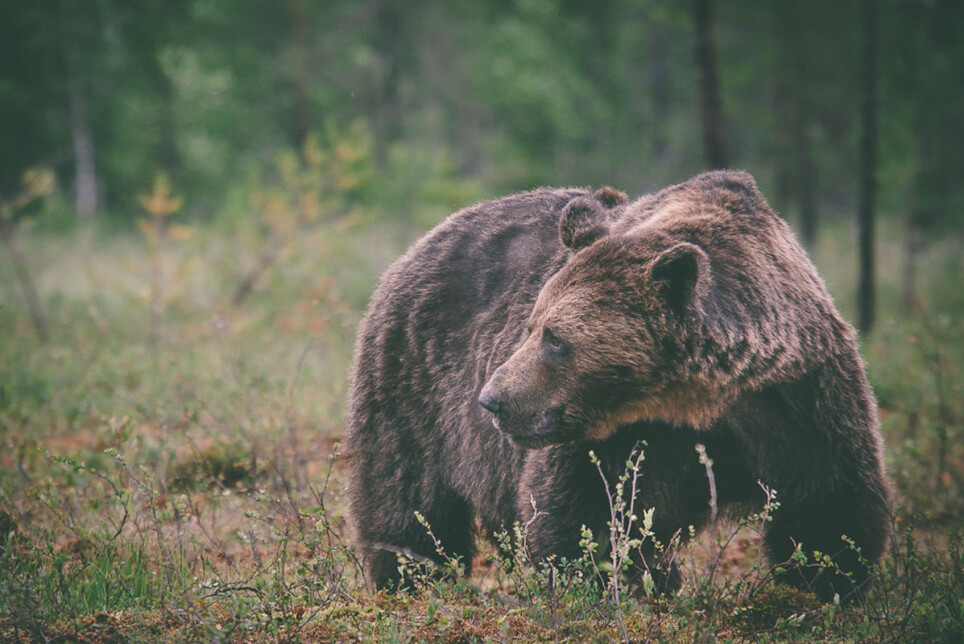THIS ARTICLE/PRESS RELEASE IS PAID FOR AND PRESENTED BY NINA - Norwegian Institute for Nature Research - read more

Scandinavian and Finnish brown bears not isolated as previously assumed
The Scandinavian and Finnish brown bear populations are among the largest in Europe, but were until recently separated. A new study shows that connectivity has been restored with decent exchange of individuals and genes between countries.
The brown bear populations in northern Europe have been recovering and expanding over the last decades. The main goal of this international collaborative effort was to assess the exchange, i.e., the number of bears migrating, between the neighboring brown bear populations in Scandinavia and Finland, using genetic methods.
In brown bears, males can migrate over long distances, while females stay closer to the area where they were born. Therefore, this study focused on male brown bears. DNA data from 924 male brown bears were included and analyzed. This is the first time such a comprehensive data set, collected from large parts of the distribution area in northern Scandinavia and Finland, has been used.
Despite a rapidly expanding brown bear population in the east (Finland), previous studies have not documented recent eastern immigrants in Scandinavia. The exception has been the Pasvik area, located in the far north-east of Norway at the border to Finland and Russia, where the brown bears are associated with the population in northern Finland and northwestern Russia.
Eastern immigrants documented in Scandinavia
The researchers were able to identify brown bears of recent eastern origin in northern Sweden for the first time. In addition, some individuals showed a mixed DNA profile with characteristics of both eastern and western genes combined, indicating that males and females of different genetic origin have mated and produced offspring.
“This suggests that the brown bear populations in Northern Europe are not genetically isolated, as indicated in previous studies. Rather, we see that there are decent levels of gene flow between northern Sweden and northern Finland,” says Alexander Kopatz, geneticist and researcher in the Scandinavian Brown Bear Research Project at the Norwegian Institute for Nature Research in Trondheim.
“The exchange of individuals and genes is highest from northern Sweden to northern Finland, but also sufficient from our eastern neighboring populations to Sweden for a genetically viable population in Scandinavia. Our data suggest that around five bears of eastern origin contribute offspring to the Scandinavian bear population every generation,” Kopatz explains. One brown bear generation is about 10 years.
Swedish bears support Finnish population
Swedish brown bears also contribute to the build-up of the brown bear population in northern Finland, with an estimated number of about 30 bears migrating from Scandinavia and establish themselves in northern Finland per generation.
“This is a significant contribution, and its order of magnitude is striking. It shows that Scandinavian brown bears are important for the brown bear population in northern Finland,” says Kopatz.
The uneven exchange of individuals between the countries is likely an effect of differences in the history of the two brown bear populations. The results of the study indicate that the Scandinavian brown bear population have started to expand earlier than the Finnish population.
Conservation implications
“Following this reconnection process across such a large area will provide important insights on how to conserve and manage recovering populations. Our study highlights that conservation minded management can lead to successful recovery of large carnivore populations and eventually reconnect once fragmented populations,” says Øystein Flagstad, geneticist, and senior researcher at Rovdata and the Norwegian Institute for Nature Research.
“These results nicely illustrate the importance of appropriate management units. Human administrative borders are arbitrary and invisible to animal species,” says Göran Spong, Senior Lecturer at the Department of Wildlife, Fish and Environmental Studies at the Swedish University of Agricultural Sciences in Umeå.
Indeed, connectivity among different populations is crucial for the long-term survival of a species. The expansion of the two populations, both in numbers and geographical extent, is a good example of how populations of large predators can overcome isolation by their migratory behavior, when their harvest is controlled.
“This emphasizes the possibility, potential and the importance of a harmonized, transborder monitoring of brown bear populations,” Kopatz concludes.
Reference:
Alexander Kopatz et.al.: Restoration of transborder connectivity for Fennoscandian brown bears (Ursus arctos), Biological Conservation, 2021.
See more content from NINA:
-
How will climate change affect lakes worldwide?
-
White-tailed sea eagles are breeding in Ireland again after more than a century
-
Could a tunnel help wild reindeer in Norway?
-
Norwegian white-tailed sea eagles are helping to rebuild a lost population in Ireland
-
1 in 4 freshwater species are at risk of extinction: "It's not too late to take action"
-
Insects prefer cold winters with lots of snow





































